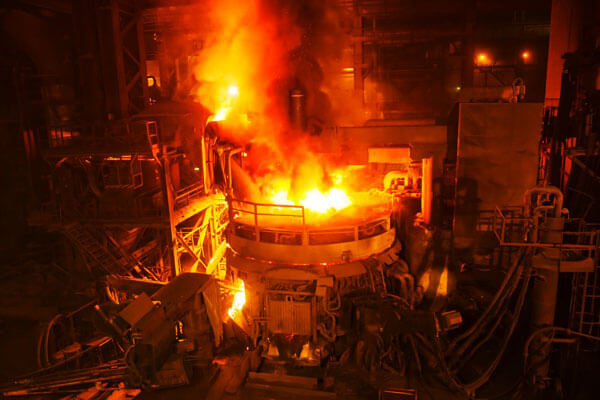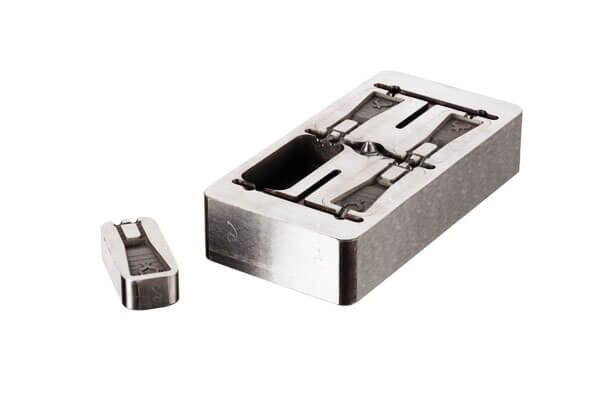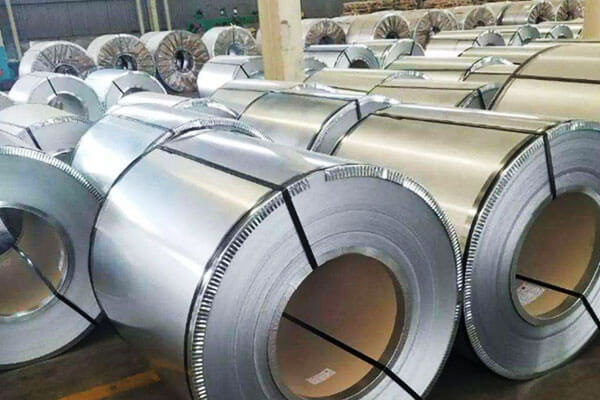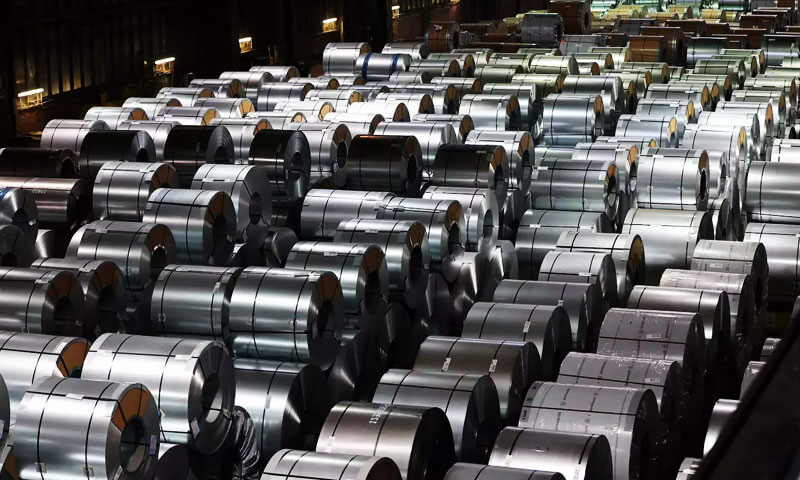مقدمة
في 1889, في معرض باريس العالمي, أذهل هيكل فولاذي شاهق العالم – برج إيفل.
مكونة من 18,038 مكونات الحديد المطاوع, لم تكن هذه الأعجوبة الهندسية ترمز إلى قمة الابتكار الهيكلي فحسب، بل كانت أيضًا علامة على الدخول الرسمي للبشرية إلى عصر الصلب.
من إطار ناطحات السحاب إلى المكونات المعقدة للأجهزة الطبية, لقد تغلغل الفولاذ في كل جانب من جوانب الحضارة الحديثة بفضل دوره الذي لا يمكن الاستغناء عنه.
أبعد من تشكيل التنمية الصناعية, لقد كانت قوة دافعة وراء توسع البنية التحتية العالمية والتقدم التكنولوجي.
يتعمق هذا المقال في الطبيعة العلمية للصلب, تقنيات التصنيع الخاصة بها, التطور الصناعي, والاتجاهات المستقبلية,
ويكشف كيف تستمر هذه المادة الأساسية في تحديد حدود الحضارة الإنسانية.
1. مراجعة تاريخية للصلب
يعود تاريخ التنقيب البشري عن الفولاذ إلى 1800 قبل الميلاد في الأناضول, لكن الثورة الصناعية الحقيقية بدأت في القرن التاسع عشر.
في 1856, هنري بيسمر اخترع محول بسمر, مما أدى إلى زيادة كفاءة إنتاج الصلب عشرين ضعفا,
تسريع التطور السريع للسكك الحديدية بشكل مباشر, بناء السفن, والهندسة الميكانيكية.
بحلول القرن العشرين, التبني على نطاق واسع ل تكنولوجيا الصب المستمر مزيد من تحسين كفاءة الإنتاج, انخفاض نفايات المواد, وتحسين جودة المنتج.
في القرن الحادي والعشرين, شهدت صناعة الصلب العالمية تحولا كبيرا.
وبرزت الصين كقوة مهيمنة, المحاسبة ل 53.9% من إنتاج الصلب الخام العالمي في 2023.
في نفس الوقت, يؤدي تشديد اللوائح البيئية وأهداف الحياد الكربوني إلى دفع الصناعة نحو التصنيع الذكي ومنخفض الكربون.
تُظهر مراجعة تاريخ تطور الفولاذ أن كل اختراق تكنولوجي أدى إلى توسيع نطاق تطبيقاته بشكل كبير,
السماح للصلب باختراق البناء التقليدي في الفضاء الجوي, الأجهزة الطبية, وقطاعات الطاقة المتجددة.
2. عمليات تصنيع الصلب
يعد إنتاج الصلب الحديث نظامًا صناعيًا متطورًا للغاية يدمج علوم المواد, الدقة الهندسية, والاستدامة البيئية.
وتشمل مراحلها الأساسية اختيار المواد الخام, صهر, تكرير, وتشكيل, فضلا عن ممارسات الاقتصاد المستدام والدائري.
مواد خام & اِستِخلاص
نوعية خام الحديد, فحم الكوك, وعناصر صناعة السبائك تحدد الخصائص النهائية للصلب.
على سبيل المثال, عالية النقاء خام الحديد مع ارتفاع محتوى الحديد يقلل بشكل كبير من الشوائب, تعزيز القوة الميكانيكية ومقاومة التآكل.
اعتبارا من 2024, وقد وصل إنتاج خام الحديد العالمي 2.2 مليار طن, مع توزيع الموارد
تلعب تكاليف الاستخراج دورًا حاسمًا في تشكيل المشهد التنافسي لصناعة الصلب.
صناعة الحديد & عمليات صناعة الصلب
يعتمد إنتاج الصلب الحديث في المقام الأول على أفران الصهر (BF), الحديد المختزل المباشر (دري), و أفران الأكسجين الأساسية (bof).
أصبحت تقنية الاختزال المباشر للحديد (DRI) وسيلة أساسية لإنتاج الفولاذ الأخضر, كما يقلل انبعاثات الكربون بنسبة 30% مقارنة بالأفران التقليدية.
بالإضافة إلى ذلك, أفران القوس الكهربائي (EAF), التي تستخدم الصلب الخردة المعاد تدويره, يملك زيادة حصتها من الإنتاج العالمي إلى 28%,
خفض استهلاك الطاقة بشكل كبير والمساهمة في نموذج إنتاج أكثر استدامة.

تكرير & تشكيل
بمجرد أن يخضع الفولاذ المنصهر للتكرير الثانوي, تتم معالجتها من خلال الصب المستمر والمتداول لإنتاج مواد عالية الدقة
مثل صفائح رقيقة جداً من الفولاذ المقاوم للصدأ و فولاذ عالي القوة من الدرجة الفضائية.
تعمل تقنيات التحكم في التبريد المتقدمة على تحسين بنية الحبوب ومقاومة التعب, جعل منتجات الصلب أكثر ملاءمة للبيئات القاسية.
الاستدامة & الاقتصاد الدائري
تعد إعادة تدوير الفولاذ حجر الزاوية في استدامة الصناعة الحديثة.
كل طن من الفولاذ المعاد تدويره يمنع انبعاث ما يقرب من 1.5 طن من ثاني أكسيد الكربون, الحد بشكل كبير من البصمة الكربونية لهذه الصناعة.
حالياً, ال لقد وصل معدل إعادة تدوير الصلب العالمي 85%, تعزيز التحول نحو إنتاج الصلب الأكثر مراعاة للبيئة وأكثر كفاءة.
3. تصنيف الصلب: الأنواع وخصائصها الفريدة
يعتبر الفولاذ أحد أكثر المواد تنوعًا في الهندسة الحديثة, وتنبع قدرته على التكيف التي لا نهاية لها من التحكم الدقيق في تركيبته الكيميائية.
عن طريق تغيير محتوى الكربون وإضافة عناصر صناعة السبائك المختلفة, يقوم المصنعون بإنشاء فولاذ ذو خصائص فريدة مصممة خصيصًا لتطبيقات محددة.
الصلب الكربوني
الصلب الكربوني بمثابة الأساس لعدد لا يحصى من التطبيقات بسبب توازن القوة والليونة.
خصائصه تعتمد في المقام الأول على محتوى الكربون, والتي تتراوح عادة من 0.05% ل 2.0%.

الصلب منخفض الكربون (الفولاذ الطري):
- صفات: يحتوي على أقل من 0.3% الكربون, مما يجعلها مرنة للغاية, من السهل تشكيلها, وقابلة للحام.
- التطبيقات: تستخدم على نطاق واسع في هياكل السيارات, الحزم الهيكلية, والسلع الاستهلاكية حيث القوة العالية ليست هي الشاغل الرئيسي.
- نقطة البيانات: غالبًا ما يُظهر الفولاذ منخفض الكربون قوة إنتاج تبلغ حوالي 250-350 ميجا باسكال,
مما يجعلها مثالية للتطبيقات التي تتطلب قوة معتدلة وقابلية تشكيل ممتازة.
الصلب متوسطة الكربون:
- صفات: مع محتوى الكربون بين 0.3% و 0.6%, يوفر هذا الفولاذ مظهرًا معززًا للقوة ومقاومة محسنة للتآكل, على الرغم من انخفاض ليونتها.
- التطبيقات: غالبا ما تستخدم لمكونات السيارات مثل التروس والأعمدة, وكذلك في صناعة خطوط السكك الحديدية.
- نقطة البيانات: تتراوح قوة الشد النموذجية من 400 إلى 600 ميجا باسكال, توفير التوازن بين القوة والليونة.
فولاذ عالي الكربون:
- صفات: يحتوي بين 0.6% و 2.0% الكربون, مما أدى إلى زيادة صلابة ومقاومة التآكل, على الرغم من أنه يضحي بالليونة.
- التطبيقات: مثالية لأدوات القطع, الينابيع, وأسلاك عالية القوة, حيث تكون المتانة تحت الضغط أمرًا بالغ الأهمية.
- نقطة البيانات: يمكن للفولاذ عالي الكربون أن يحقق قوة شد أعلى 800 MPa بعد المعالجة الحرارية المناسبة, مما يجعلها مثالية للتطبيقات الثقيلة.
سبيكة الصلب
سبيكة الصلب يعزز الخصائص الأساسية للصلب الكربوني عن طريق إضافة عناصر مثل المنغنيز, الكروم, النيكل, و molybdenum.
يسمح هذا التخصيص بخصائص أداء مخصصة مثل المتانة المحسنة, مقاومة الحرارة, ومقاومة التآكل.

الصلب منخفضة الصلب:
- صفات: يتضمن عادةً نسبًا صغيرة (ما يصل الى 5%) من عناصر صناعة السبائك التي تعزز القوة دون خسارة كبيرة في الليونة.
- التطبيقات: تستخدم في التطبيقات الهيكلية, خطوط الأنابيب, وقطع غيار السيارات التي تتطلب قوة عالية وصلابة معتدلة.
الصلب عالي الكل:
- صفات: يشتمل على نسبة أعلى من عناصر صناعة السبائك لتوفير أداء فائق,
بما في ذلك مقاومة التآكل المحسنة والقدرة على تحمل درجات الحرارة القصوى. - التطبيقات: شائع في قطاعات الطيران وتوليد الطاقة, حيث يجب أن تتحمل المواد البيئات القاسية.
- نقطة البيانات: تظهر بعض أنواع الفولاذ عالية السبائك قوة خضوع تتجاوز 600 MPa وتم تصميمها لمقاومة التشوه حتى عند درجات حرارة أعلى من 600 درجة مئوية.
الفولاذ المقاوم للصدأ
الفولاذ المقاوم للصدأ يميز نفسه بمقاومته الممتازة للتآكل, يتحقق من خلال دمج على الأقل 10.5% الكروم في السبائك.
يشكل الكروم طبقة سلبية من أكسيد الكروم على السطح, حماية المواد من الصدأ والتدهور البيئي.

الفولاذ المقاوم للصدأ الأوستنيتي:
- صفات: غير مغناطيسية, مقاومة للغاية للتآكل, ولاحظت قابليتها للتشكيل واللحام الممتازة.
- التطبيقات: تستخدم على نطاق واسع في أدوات المطبخ, معدات المعالجة الكيميائية, والأجهزة الطبية.
- نقطة البيانات: درجات مثل 304 و 316 يُظهر الفولاذ المقاوم للصدأ في كثير من الأحيان قوة شد تتراوح بين 500-750 ميجا باسكال,
جنبا إلى جنب مع المقاومة المتميزة للتآكل في بيئات متنوعة.
الفولاذ المقاوم للصدأ مارتينيسيتي:
- صفات: يوفر صلابة وقوة أعلى مقارنة بالأنواع الأوستنيتي, على الرغم من أنها أقل مقاومة للتآكل وأكثر صعوبة في اللحام.
- التطبيقات: توجد عادة في أدوات القطع, الأدوات الجراحية, والبيئات عالية التآكل.
- نقطة البيانات: يمكن أن تصل قيم الصلابة النموذجية إلى 600 HRC بعد المعالجة الحرارية, مما يجعلها مناسبة للتطبيقات عالية الأداء.
الفولاذ المقاوم للصدأ الفيريريك:
- صفات: مغناطيسي وأقل ليونة من الفولاذ المقاوم للصدأ الأوستنيتي ولكنه يوفر مقاومة جيدة للتشقق الناتج عن التآكل الإجهادي.
- التطبيقات: يستخدم في أنظمة عوادم السيارات والمعدات الصناعية التي تتطلب قوة معتدلة مع مقاومة جيدة للتآكل.
دوبلكس ستانلس ستيل:
- صفات: يجمع بين أفضل أنواع الفولاذ المقاوم للصدأ الأوستنيتي والفيريتيك, تقدم قوة عالية ومقاومة محسنة للتآكل والتشقق الناتج عن التآكل الإجهادي.
- التطبيقات: مثالية للمعالجة الكيميائية, الهياكل الخارجية, والتطبيقات البحرية.
- نقطة البيانات: غالبًا ما يتميز الفولاذ المزدوج بقوة إنتاج تتراوح بين 550-750 ميجا باسكال, يتفوق بشكل كبير على العديد من الفولاذ الأوستنيتي من حيث القوة.
أداة والفولاذ عالي السرعة
الأداة فولاذ و الفولاذ عالي السرعة هي سبائك متخصصة مصممة لتصنيع أدوات القطع, يموت, والقوالب.
أنها تتطلب صلابة استثنائية, ارتداء المقاومة, والقدرة على الاحتفاظ بالقوة في درجات الحرارة المرتفعة.

أداة الصلب:
- صفات: مصنوع من التنجستن, الموليبدينوم, الفاناديوم, والكوبالت, تتفوق هذه الفولاذ في الصلابة والمتانة في ظل الظروف القاسية.
- التطبيقات: تعمل في إنتاج الأدوات اليدوية, يموت, وغيرها من الأدوات الدقيقة المطلوبة لتطبيقات الضغط العالي.
- نقطة البيانات: تحقق بعض أدوات الفولاذ مستويات صلابة تتجاوز 65 HRC, مما يجعلها قادرة على تحمل الاستخدام لفترات طويلة دون تآكل كبير.
فولاذ عالي السرعة (HSS):
- صفات: معروف بقدرته على الحفاظ على الصلابة حتى في درجات الحرارة المرتفعة, يعد HSS أمرًا بالغ الأهمية لتطبيقات التصنيع والقطع عالية السرعة.
- التطبيقات: كثيرا ما تستخدم في لقم الثقب, المطاحن النهائية, وأدوات القطع الأخرى في عمليات التصنيع.
- نقطة البيانات: عادةً ما يحافظ الفولاذ عالي السرعة على درجات حرارة تشغيل تصل إلى 600 درجة مئوية مع الحفاظ على أداء القطع, وبالتالي زيادة كفاءة الإنتاج.
4. تفريغ الخصائص الفيزيائية والميكانيكية للصلب
في هذا القسم, نحن نحلل الخصائص الفيزيائية والميكانيكية الأساسية للصلب, تسليط الضوء على كيفية دفع هذه الخصائص لتطبيقاتها المتنوعة.
الخصائص الفيزيائية
الكثافة والوزن
- يتميز الفولاذ بكثافة تقارب 7.85 ز/سم, الذي يحقق توازنًا ممتازًا بين المتانة وسهولة الإدارة.
تتيح هذه الكثافة المثالية للمهندسين تصميم الهياكل التي تدعم الأحمال الثقيلة دون تكبد وزن زائد. - على سبيل المثال, عند بناء الجسور أو المباني الشاهقة, تسمح كثافة الفولاذ بقدرة تحمل كبيرة مع الحفاظ على الكفاءة الهيكلية.
نقطة الانصهار والاستقرار الحراري
- مع نقطة انصهار تتراوح عادة بين 1370 درجة مئوية و1510 درجة مئوية, يتحمل الفولاذ درجات الحرارة القصوى بسهولة.
تضمن نقطة الانصهار العالية هذه بقاء مكونات الفولاذ مستقرة حتى في البيئات عالية الحرارة مثل المحركات التوربينية أو الأفران الصناعية. - علاوة على ذلك, يعد الاستقرار الحراري للصلب أمرًا بالغ الأهمية في تطبيقات مثل مكونات السيارات ومحطات الطاقة, حيث يكون الأداء المتسق تحت الحرارة أمرًا ضروريًا.
الموصلية الحرارية
- يُظهر الفولاذ بشكل عام الموصلية الحرارية حوله 50 ث/م · ك, مما يسمح لها بنقل الحرارة بشكل فعال.
تجعل هذه الخاصية الفولاذ خيارًا مثاليًا للتطبيقات التي تتطلب تبديدًا فعالًا للحرارة, مثل المبادلات الحرارية وأجزاء المحرك. - فضلاً عن ذلك, تساعد التوصيل الحراري الفعال على تقليل النقاط الساخنة أثناء التصنيع عالي السرعة والمعالجة الصناعية.
معامل التمدد الحراري
- معامل التمدد الحراري للصلب, تقريبًا 11-13 µm/m · ° c, يضمن الحفاظ على استقرار الأبعاد في ظل ظروف درجات الحرارة المختلفة.
هذا الاستقرار مهم بشكل خاص في الهندسة الدقيقة والبناء, حيث يمكن أن تؤدي التشوهات الطفيفة إلى الإضرار بالسلامة الهيكلية.
الخصائص المغناطيسية
- تسمح الخصائص المغناطيسية المتأصلة للصلب بمغنطته بسهولة.
تثبت هذه الخاصية أنها لا تقدر بثمن في تصميم المحركات الكهربائية, محولات, والمكونات الإلكترونية المختلفة, حيث يكون السلوك المغناطيسي المتحكم فيه ضروريًا.
الخصائص الميكانيكية
الشد والقوة العائد
- يتميز الفولاذ بقوة الشد المذهلة, والتي يمكن أن تتراوح من 400 الآلام والكروب الذهنية لأكثر من 800 MPa بعد المعالجات الحرارية المتقدمة.
هذه القوة تمكن الفولاذ من دعم الأحمال الضخمة, مما يجعلها لا غنى عنها في البناء على نطاق واسع والآلات الثقيلة. - بالإضافة إلى, قوة العائد, عادة بين 250 MPA و 350 MPa للفولاذ الإنشائي الشائع,
يضمن أن المكونات الفولاذية تقاوم التشوه الدائم تحت الضغط العالي.
قد تتفوق السبائك عالية القوة 500 MPA, تلبية المتطلبات الصارمة لتطبيقات الطيران والسيارات.
ليونة ومتانة
- إن قدرة الفولاذ على التشوه تحت ضغط الشد دون أن ينكسر - والمعروفة بالليونة - تثبت أنها حيوية في امتصاص الطاقة أثناء الصدمات.
على سبيل المثال, يمكن للفولاذ المتقدم عالي القوة في إطارات السيارات أن يمتص طاقات الصدمات حتى 120 كيلوجول / سم مكعب, وبالتالي تعزيز سلامة الركاب. - فضلاً عن ذلك, وتضمن المتانة - القدرة على تحمل الصدمات والاهتزازات - قدرة الفولاذ على تحمل دورات الإجهاد المتكررة,
وهو أمر بالغ الأهمية للتطبيقات في الجسور, السكك الحديدية, والآلات.
مقاومة التعب
- يتطلب التحميل الدوري الذي تتحمله العديد من الهياكل مواد يمكنها مقاومة التعب بمرور الوقت.
تضمن مقاومة التعب الممتازة للصلب أن تظل المكونات مثل العوارض وإطارات المركبات موثوقة حتى في ظل تقلبات الحمل المستمرة,
وبالتالي إطالة عمر البنية التحتية الحيوية.
صلابة وارتداء المقاومة
- يمكن تعزيز صلابة الفولاذ بشكل كبير من خلال عمليات صناعة السبائك والمعالجة الحرارية, مما أدى إلى تحسين مقاومة التآكل.
هذه الخاصية ضرورية لتطبيقات مثل أدوات القطع, التروس, والمحامل, حيث يتطلب التعرض لفترات طويلة للاحتكاك والإجهاد مادة تحافظ على سلامتها مع مرور الوقت. - تمكن المعالجات الحرارية المتقدمة وتقنيات صناعة السبائك بعض أنواع الفولاذ من تحقيق مستويات الصلابة
التي لا تقاوم التآكل فحسب، بل تعمل أيضًا على تحسين الأداء في العمليات الصناعية عالية السرعة.
تفاعل الخصائص وتأثيرها
القوة التآزرية والليونة
- إن المزيج الفريد من قوة الشد العالية والليونة الكبيرة يجعل الفولاذ قويًا ومرنًا.
يسمح هذا التآزر بدعم الأحمال الكبيرة مع امتصاص الصدمات, وهو أمر بالغ الأهمية في الهياكل مثل ناطحات السحاب والجسور.
الأمثل من خلال صناعة السبائك والمعالجات الحرارية
- يقوم المصنعون باستمرار بتحسين الفولاذ عن طريق تعديل محتوى الكربون وإضافة عناصر مثل الكروم, النيكل, والمنغنيز.
تؤدي هذه التحسينات إلى فولاذ فائق القوة يمكن تجاوزه 1 المعدل التراكمي في قوة الشد مع الحفاظ على ليونة كافية لتحمل الضغوط الديناميكية. - بالإضافة إلى, أدت التطورات المستمرة في عمليات المعالجة الحرارية إلى تحسين مقاومة التعب والأداء العام,
ضمان بقاء الفولاذ في طليعة المواد الهندسية.
التآزر الحراري والميكانيكي
- إن قدرة الفولاذ على نقل الحرارة بكفاءة تكمل متانته الميكانيكية, لتمكينها من الأداء بشكل موثوق في ظل الظروف القاسية.
يثبت هذا التفاعل الحراري الميكانيكي أنه ضروري في التطبيقات التي تستخدم المواد
يجب أن يتحمل درجات الحرارة المرتفعة والضغط الميكانيكي الكبير, كما هو الحال في محركات الطيران والغلايات الصناعية.
5. تجهيز وتصنيع الصلب
أدى التقدم المستمر في تكنولوجيا معالجة الصلب إلى تعزيز القيمة المضافة لمنتجات الصلب بشكل كبير, تمكين أداء أعلى, متانة, والكفاءة.
المعالجة الحرارية: تعزيز القوة والمتانة
تلعب عمليات المعالجة الحرارية دورًا حاسمًا في تعديل البنية المجهرية للفولاذ لتحسين خواصها الميكانيكية,
مثل الصلابة, صلابة, وارتداء المقاومة. تشمل التقنيات الشائعة:
- الصلب - يقلل من التوتر الداخلي, يحسن إمكانية التشغيل الآلي, ويعزز ليونة.
- التطبيع - ينقي بنية الحبوب ويحسن القوة الميكانيكية.
- التبريد - التبريد السريع يزيد من الصلابة ومقاومة التآكل.
- تقع – يضبط المتانة ويقلل الهشاشة بعد التسقية.
على سبيل المثال, يمكن لتقنية التبريد بالليزر أن تزيد من صلابة سطح التروس HRC60, تقليل معدل التآكل بنسبة 70%,
وبالتالي إطالة عمر الخدمة في التطبيقات ذات الأحمال العالية مثل ناقل حركة السيارات والآلات الصناعية.
المعالجة الباردة: تحسين الدقة وجودة السطح
تعمل طرق المعالجة الباردة على تحسين الأبعاد والتشطيب السطحي للمكونات الفولاذية, تقدم دقة فائقة وخصائص ميكانيكية محسنة. وتشمل التقنيات الرئيسية:
- المتداول البارد – يزيد من القوة والانتهاء من السطح, يشيع استخدامها في لوحات السيارات والمكونات الدقيقة.
- الرسم البارد – يحسن دقة الأبعاد وقوة الشد, ضروري لإنتاج أسلاك وأنابيب فولاذية دقيقة.
- النتوء البارد – يعزز التوحيد والخواص الميكانيكية, غالبا ما تستخدم في تصنيع السحابات والأجزاء الهيكلية.
مع 5-محور CNC الآلات, يمكن التحكم في دقة تصنيع شفرات التوربينات من الداخل ± 0.005mm,
ضمان الكفاءة الديناميكية الهوائية المثلى في صناعات الطيران وتوليد الطاقة.
المعالجة السطحية: تعزيز مقاومة التآكل والجاذبية الجمالية
توفر المعالجات السطحية طبقات واقية تعمل على إطالة عمر منتجات الفولاذ, تحسين مقاومة التآكل, وتعزيز الجاذبية البصرية. وتشمل طرق المعالجة السطحية المتقدمة:

- الجلفنة – طلاء الزنك يحمي الفولاذ من الصدأ والأكسدة.
- طلاء الكروم – يزيد من الصلابة ويمنحك مظهرًا أنيقًا, الانتهاء من مقاومة التآكل.
- الفوسفات – يشكل طبقة واقية تعزز التصاق الطلاء ومقاومة التآكل.
بشكل ملحوظ, تكنولوجيا النانو الجلفنة أحدثت ثورة في الحماية من التآكل من خلال توسيع نطاق دورة مكافحة التآكل ل 50 سنين بينما يتم تقليله في نفس الوقت استهلاك الزنك عن طريق 60%,
مما يجعلها حلاً مستدامًا بيئيًا للبنية التحتية والتطبيقات البحرية.
تكنولوجيا اللحام: تحقيق مفاصل قوية وموثوقة
غالبًا ما تتطلب الهياكل الفولاذية تقدمًا اللحام تقنيات لضمان المتانة والقدرة على التحمل.
يعتمد اختيار طريقة اللحام على عوامل مثل تكوين المواد, تصميم مشترك, ومتطلبات التطبيق. وتشمل تقنيات اللحام الشائعة:
- لحام القوس - متعددة الاستخدامات وتستخدم على نطاق واسع في تصنيع الفولاذ الهيكلي.
- لحام الليزر – يوفر دقة عالية مع الحد الأدنى من التشوه الحراري, مناسبة للمكونات الفضائية والطبية.
- لحام شعاع الإلكترون – مثالي للمفاصل عالية القوة في البيئات المفرغة, تستخدم عادة في الصناعات الفضائية والنووية.
الابتكارات في اللحام الآلي الآلي و تحريك الاحتكاك (FSW) لقد قمنا بتحسين السلامة المشتركة وكفاءة التصنيع,
جعل التجميعات المعقدة أكثر موثوقية وفعالية من حيث التكلفة.
التصنيع الدقيق: تحقيق دقة غير مسبوقة
يعد التصنيع الدقيق أمرًا بالغ الأهمية في الصناعات التي تتطلب مكونات فولاذية عالية الأداء مع تفاوتات صارمة.
لقد أحدث تطور تقنيات التصنيع المتقدمة ثورة في تصنيع الأجزاء الفولاذية المعقدة. وتشمل التقنيات الرئيسية:
- تصنيع CNC المراكز - تمكين السرعة العالية, قطع وتشكيل عالي الدقة.
- سلك التنظيم الإداري (معالجة التفريغ الكهربائي) - يسمح بقطع فائق الدقة لمكونات الفولاذ المعقدة.
- موسيقى الرقص الإلكترونية (معالجة التفريغ الكهربائي) - يعزز الدقة في سبائك الصلب التي يصعب تشكيلها.
وقد أدت هذه التقنيات المتطورة إلى تحسينات غير مسبوقة في الجودة والأداء من منتجات الفولاذ,
تمكين تطبيقها على نطاق واسع في مجال الطيران, يزرع طبية, والهندسة عالية الأداء.
6. التأثير العالمي وتطبيقات الصلب
يمتد تأثير الصلب إلى صناعات متعددة, ويستفيد كل منها من خصائصه الفريدة:
- البناء والبنية التحتية: يشكل الفولاذ العمود الفقري للمناظر الطبيعية الحضرية الحديثة.
الفولاذ الهيكلي يدعم ناطحات السحاب, الجسور, والسكك الحديدية, أثناء تعزيز القضبان (حديد التسليح) توفير القوة الأساسية للهياكل الخرسانية.
على سبيل المثال, تم استخدام جسر هونغ كونغ-تشوهاي-ماكاو 2 مليون طن من الفولاذ, ضمان عمر يتجاوز 120 سنوات في ظل الظروف البحرية القاسية. - السيارات والفضاء: تضمن السبائك الفولاذية عالية القوة سلامة السيارة وكفاءة استهلاك الوقود.
في الفضاء, يساهم الفولاذ في خفة الوزن, هياكل الطائرات ومكونات المحرك المتينة التي تتحمل درجات الحرارة والضغوط القصوى. - التصنيع والمعدات الصناعية: من الأدوات الآلية إلى الآلات الصناعية الثقيلة, إن متانة الفولاذ وتعدد استخداماته تجعله لا غنى عنه.
وقد أدى استخدامه في المعدات الدقيقة إلى تحويل كفاءة الإنتاج في جميع أنحاء العالم. - المنتجات الاستهلاكية والطبية: مقاومة التآكل والتوافق الحيوي للفولاذ المقاوم للصدأ تجعله مثاليًا لأجهزة المطبخ, يزرع طبية, والأدوات الجراحية.
توفر السبائك المتقدمة مثل 316LVM أداءً فائقًا في تطبيقات الرعاية الصحية الصعبة.
7. الوضع الحالي لصناعة الصلب: تحليل شامل
صناعة الصلب تمر بنقطة تحول, موازنة التقدم التكنولوجي مع أهداف الاستدامة مع التكيف مع المشهد الاقتصادي والجيوسياسي المتغير.
نظرة عامة على السوق العالمية: الدفع نحو الفولاذ المحايد للكربون
تستثمر البلدان في جميع أنحاء العالم في عمليات صناعة الصلب الصديقة للبيئة.
السويد فرن اختبار المعادن الهيدروجين يعمل الآن, الاستهداف صفر انبعاثات الكربون بنسبة 2030.
في أثناء, يتم تنفيذ كبار المنتجين تقنيات الإنتاج منخفضة الانبعاثات لتلبية اللوائح العالمية الصارمة.
إدارة سلسلة التوريد: ضمان الاستقرار والكفاءة
توافر المواد الخام, اللوجستية, ولا تزال سياسات التجارة الدولية قائمة العوامل الحاسمة تؤثر على إنتاج الصلب.
الشركات تتبنى حلول سلسلة التوريد الذكية لتعزيز الاستقرار والكفاءة.
على سبيل المثال, مصنع آنشان للحديد والصلب الذكي, باستخدام عملية كاملة لمنظمة العفو الدولية, وقد حقق أ 99.7% معدل اكتشاف العيوب, تحسين دقة الإنتاج بشكل كبير وتقليل النفايات.
الابتكار التكنولوجي: تطور الفولاذ عالي الأداء
التطورات المتطورة تعيد تعريف صناعة الصلب:
- المصانع الذكية – تتيح الأنظمة المعتمدة على الذكاء الاصطناعي مراقبة الإنتاج وتحسينه في الوقت الفعلي.
- خفيف الوزن, الفولاذ عالي القوة – ضروري لل السيارات والفضاء القطاعات, تقليل استهلاك الوقود وتحسين السلامة.
- الصلب النانوي - في حين تقدم نقاط القوة أعلاه 2 GPA, فهو لا يزال في مرحلة مبكرة من التطوير,
مع تكاليف الإنتاج 40% أقل من سبائك التيتانيوم ولكنها تواجه تحديات في التطبيقات الصناعية واسعة النطاق.
استراتيجيات تغير المناخ: جهود إزالة الكربون على مستوى الصناعة
تتخذ صناعة الصلب تدابير استباقية لتقليل الانبعاثات:
- التزام الصين – خطط لخفض كثافة انبعاثات الكربون من خلال 18% بواسطة 2030 من خلال CCUS المتقدمة والعمليات الموفرة للطاقة.
- الكهرباء والوقود البديل – اعتماد صناعة الصلب على أساس الهيدروجين وتوسيع فرن القوس الكهربائي (EAF) إنتاج هي المفتاح لتحقيق صافي انبعاثات صفر.
8. الاتجاهات والتحديات المستقبلية في صناعة الصلب
مع تطور صناعة الصلب لتلبية الطلب العالمي, أهداف الاستدامة, والتقدم التكنولوجي, فهي تواجه فرصًا تحويلية وتحديات كبيرة.
يتنقل القطاع في مشهد شكله الابتكار, السياسات البيئية, وتغير الظروف الاقتصادية.
الابتكار التكنولوجي: التصنيع الذكي والمواد عالية الأداء
دمج الأتمتة, الذكاء الاصطناعي (منظمة العفو الدولية), والمصانع الذكية يعيد تشكيل إنتاج الصلب.
تعمل الأنظمة المعتمدة على الذكاء الاصطناعي على تحسين كفاءة الإنتاج, تقليل النفايات, وتعزيز مراقبة الجودة.
صعود الصلب النانوي, تتباهى بنقاط قوة تتجاوز 2 GPA, يحدث ثورة في التطبيقات عالية الأداء,
من المحتمل أن تنافس سبائك التيتانيوم في مجال الطيران والهندسة المتقدمة.
في أثناء, اختراقات في 3الطباعة ثلاثية الأبعاد على الفولاذ السماح للمعقدة, تصميمات خفيفة الوزن ذات خصائص ميكانيكية فائقة.
مبادرات الاستدامة: إزالة الكربون والإنتاج الأخضر
ردا على تغير المناخ وأهداف خفض الكربون, تتبنى صناعة الصلب بنشاط تقنيات الإنتاج الأنظف. وتشمل اتجاهات الاستدامة الرئيسية:
- صناعة الصلب على أساس الهيدروجين - دول مثل السويد رائدة في تعدين الهيدروجين, تهدف إلى الفولاذ المحايد للكربون بواسطة 2030.
- احتجاز الكربون, استخدام, والتخزين (CCUS) - قطاع الصلب في الصين يهدف إلى خفض كثافة الكربون بنسبة 18% بواسطة 2030, الاستفادة من تقنيات احتجاز الكربون وإعادة تدويره.
- أفران القوس الكهربائي (القوات الجوية) - الاعتماد المتزايد على القوات المسلحة المصرية, التي تقوم بإعادة تدوير خردة الفولاذ, يقلل من استهلاك الطاقة والانبعاثات مقارنة بالأفران التقليدية.
المشهد المادي التنافسي: تحدي البدائل
يواجه الصلب منافسة من المواد الناشئة مثل المركبات, سبائك الألومنيوم, والمواد النانوية, خاصة في صناعات السيارات والفضاء.
لكن, فعالية الفولاذ من حيث التكلفة, متانة, وقابلية إعادة التدوير الاستمرار في جعلها العمود الفقري للتصنيع الصناعي.
الابتكارات في قوة عالية, فولاذ خفيف الوزن تعمل على تعزيز قدرتها على التكيف في التطبيقات الهيكلية.
ديناميات السوق العالمية: السياسات التجارية والتحولات الاقتصادية
تتأثر صناعة الصلب بشدة بالعوامل الجيوسياسية, لوائح التجارة, والاتجاهات الاقتصادية:
- اضطرابات سلسلة التوريد – يؤثر تقلب أسعار المواد الخام والحواجز التجارية السياسية على إنتاج الفولاذ العالمي.
- النمو الإقليمي – التصنيع السريع في جنوب شرق آسيا وأفريقيا يؤدي إلى زيادة استهلاك الصلب.
- التحالفات الاستراتيجية - يقوم منتجو الفولاذ بتكوين شراكات عالمية لتعزيز كفاءة استخدام الموارد وتوسيع السوق.
9. خاتمة
لم يقم الفولاذ بتحويل المشهد المادي فحسب، من برج إيفل إلى الأفق الحضري الحديث، بل أعاد أيضًا تشكيل التقدم البشري نفسه.
مع تحول العالم نحو عمليات تصنيع أكثر استدامة وابتكارًا,
يستمر الفولاذ في التطور, مدفوعة بالتقدم التكنولوجي والالتزام المستمر بالتميز.
وتجسد رحلتها من إنتاج الحديد القديم إلى المصانع الذكية الحديثة روح الابتكار الصناعي والإبداع البشري.
إذا كنت تبحث عن منتجات فولاذية عالية الجودة, اختيار لانجهي هو القرار الأمثل لاحتياجات التصنيع الخاصة بك.


